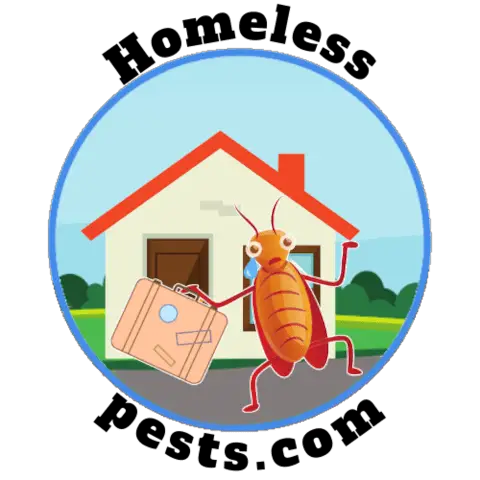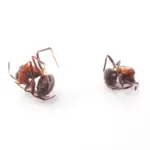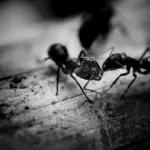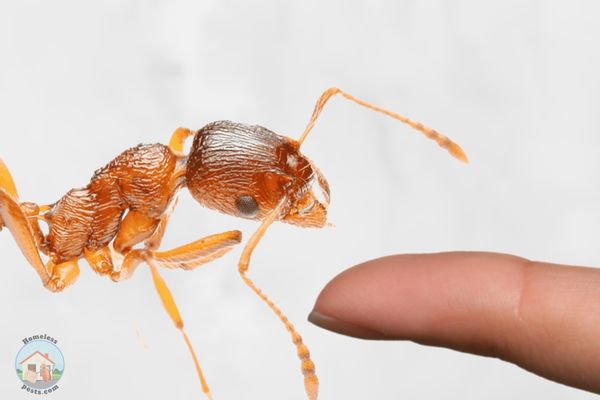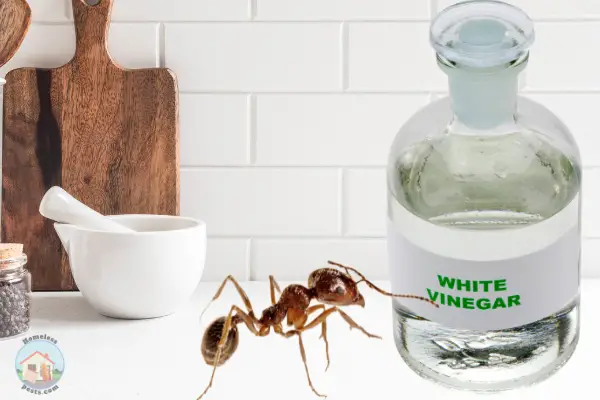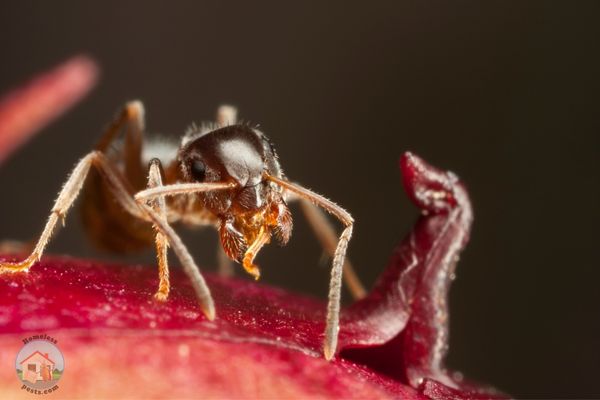If you’ve been seeing more carpenter ants around your home, it’s time to take action and get rid of them. Carpenter ants can be a real nuisance, invading your food and nesting in your woodwork.
In this article, I’m going to talk you through some of the best ways to get rid of carpenter ants for good.
Why are Carpenter ants such a worry?
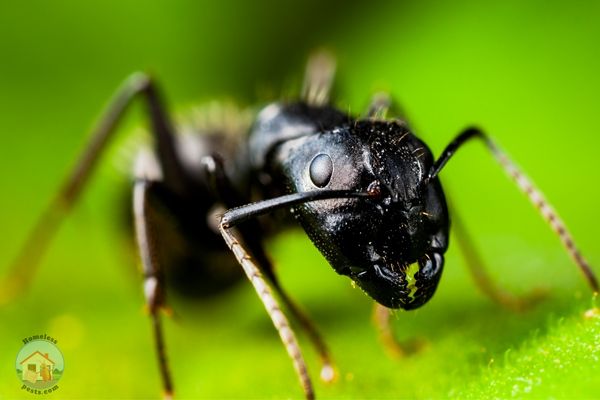
It could be really easy to pass carpenter ants off as nothing but a small and perhaps disgusting little nuisance. However, they do more than just invade your home in the search for food.
It’s the fact that these little insects actually burrow into the very structure of our homes that should have you worried.
If left untreated, they can cause significant damage to your home or business. Carpenter ants will destroy any soft or damaged wood in or around your structure.
This includes woodwork, framing, insulation, and any other areas where they can find access.
In some cases, these little critters have even been known to cause fires by chewing through electrical wiring.
So, while getting rid of carpenter ants may not be at the top of your to-do list, it’s certainly something you should take care of as soon as possible.
How to identify carpenter ants
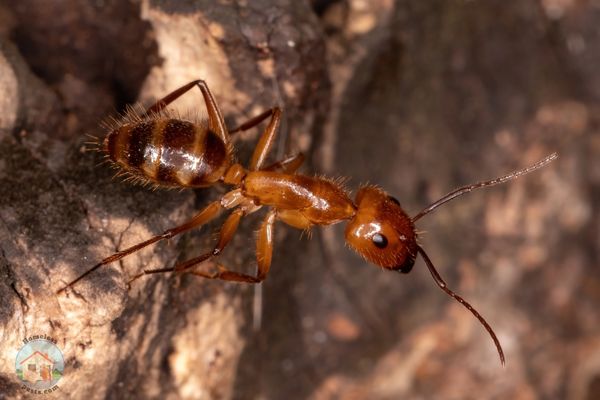
Unless you are some sort of ant enthusiast, these little pests are all going to look pretty much the same. Unfortunately, the carpenter ant is not just one species, it is actually a moniker given to more than 20 US ant species. So how can you be sure you are dealing with Carpenter ants and not another type of ant or even a termite?
The carpenter ant is one of the largest ant species in the United States. Typically between one-fourth to three-fourths of an inch long, they can range in color.
The most foolproof way to identify a carpenter ant is by the shape of their heads which are heart-shaped and much larger in comparison to the rest of their bodies. If you take a closer look, you will also notice that carpenter ants have three nodes or “bumps” on their thoraxes.
These are located between the abdomen and the head and are connected by a thin “waist.”
The fact that they have three nodes tells you instantly that you are dealing with an ant and not a termite. Also, when you see swarming ants (or are they termites?) you’ll notice that an ant’s wings are different sizes. The front wings are shorter than the back wings. A termite’s wings are all the same size.
Another way to be sure that you are dealing with carpenter ants rather than another type of ant is by the mess they make. No other ant will leave small trails of sawdust-like material in your home. This is the material that it has carved out of your wooden structures and pushed out behind it. If you see this type of mess, you have a carpenter ant infestation!
Finding carpenter ants and their nests
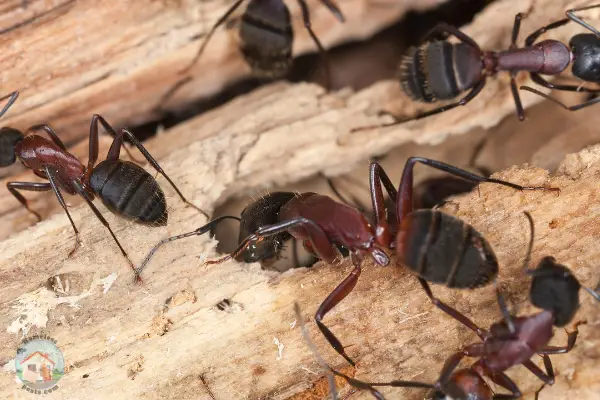
So once you’ve identified some of the forager carpenter ants which might have been wandering around your home or yard, you now want to find their nests. There are two types of carpenter ant nests: Satellite and Parent. The satellite nest is where the foraging carpenter ants go to feed the colony, while the parent nest is where the queen resides.
The best way to find the satellite nests is by following the carpenter ant trails. These will lead you right to the food source. The parent nest is going to be more difficult to find as it is often located deep within a structure, in hollow spaces like walls, ceilings, or attics.
To find the parent nest, you will need to look for the swarming carpenter ants. These are the males and females that leave the nest to mate. Once they have mated, the females will return to the parent nest to start their own colonies. For more information about swarming or flying ants, read my full article.
In general, check wooden areas that hold moisture such as around windows, door frames, plumbing under kitchen and bathroom sinks, wooden structures, and any collections of wet or dead wood. You’re looking for frass, which is wood debris found near tunnels, any damaged wood that will have smooth galleries and openings, or any ant trails and activity.
You may also have carpenter ants in your walls. If you hear a faint rustling sound in your walls, it may be carpenter ants. You can try to find the source of the noise by lightly tapping on your wall and listening for where the noise is coming from.
Once you have found where the carpenter ants are nesting, you will want to start exterminating them before they can do any more damage.
What products to use against carpenter ants

Once you’ve confirmed carpenter and activity. It’s time for chemical control. Start inside with bait like Advance Granular Carpenter Ant Bait (Amazon). This is a granular bait that can be used with a duster for easy application.
For best results, apply the bait near the confirmed site of a nest. When you aren’t able to positively identify a nest, you can apply it near sinks or drains around appliances along walls, or around bathroom fixtures.
Next apply TERRO T1901SR Carpenter Ant & Termite Killer (Amazon) to any cracks, crevices, and wall voids. This is a non-repellent foam, so the ants will unknowingly come into contact with it, return to the colony, and contaminate others.
I’d recommend applying TERRO T1901SR around windows, doors, and plumbing under sinks. You can even use it by spraying it into walls. Another good option is to puff a cloud of insecticidal dust like TERRO T600 Ant Dust (Amazon) into voids.
The main objective is to get as much insecticide into as many ant hidey-holes as possible. This can then be taken right into the heart of a colony by the unwitting ants themselves.
For the outside of your home, treat with a non-repellent insecticide like Tempo Sc (Amazon). Just mix it with water, following the label instructions, in a pump sprayer, What you want to do is to create a barrier around your home or business by spraying one to three feet up the wall. And one to three feet out.
Don’t forget to also spray around windows and doors as well as around the eaves and entry points. If you have pipes that penetrate the wall, make sure you coat these too.
If you want, you can also spread and spot treat with Advance granular bait around the property and treat any cracks, crevices, or ant galleries that you’ve found with TERRO T1901SR foam. Don’t be afraid to go above and beyond what you think is necessary, you really want to stop this issue now rather than pay for structural repairs down the road.
Recommended ant control products

Use this as your first line of defense to bait and kill off ant colonies.
Find the latest deals and prices on Amazon

Liquid insecticides are excellent for building a perimeter around your property and keeping ant colonies in check.
Find the latest deals and prices on Amazon

Stop ants from hiding in walls or cracks by squeezing them out with this insecticide foam.
Find the latest deals and prices on Amazon

Use this gel bait to attract and poison an entire ant colony.
Find the latest deals and prices on Amazon

Use this to flush out ants hiding in walls or cracks.
Find the latest deals and prices on Amazon
How to prevent carpenter ants from coming back
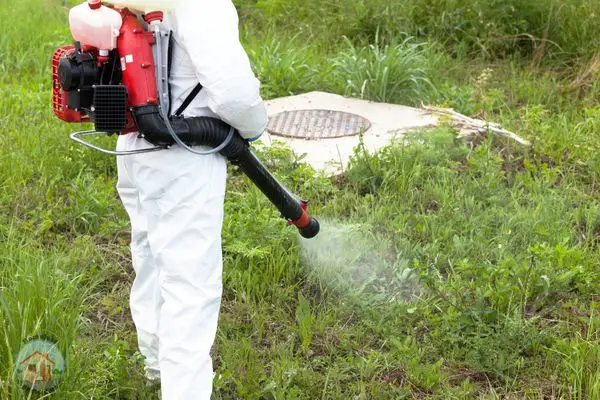
If you’ve ever seen a huge ant swarm on a hot summer evening, you know that there can be thousands of these flying ants. What you might not know is that this is the time of year when carpenter ants start brand new colonies. You want to make sure that your property is protected from these pests, so follow these tips on how to get rid of carpenter ants.
Carpenter ants are attracted to damp or moist wood, so one of the best things you can do is to make sure that your property is free of any wood debris. Keep your gutters clean and clear and repair any leaks around your property. If you have any firewood, make sure that it is stored away from your home or business and keep it off the ground.
You can also use a bore care treatment on any wood around your property. This will help to prevent carpenter ants from being able to infest the wood and will also help to protect against other pests.
Finally, if you see any carpenter ants on your property, make sure that you kill them. You can do this by following the previous steps. Once the carpenter ants are gone, make sure to seal up any cracks or crevices around your property so that they cannot come back.
With these tips, you can get rid of carpenter ants and keep them from coming back. If you have any questions or concerns, please feel free to contact a local pest control service and make sure the job is done properly!
Tools for spreading Insecticide outdoors
Battery Powered Sprayer

See the latest deals on Amazon
Broadcast Spreader

See the latest deals on Amazon
Hand Spreader

See the latest deals on Amazon
How to identify common US ant species
Below is a quick guide to help you identify the seven most common ants that you will come across around your property.
Fire Ants
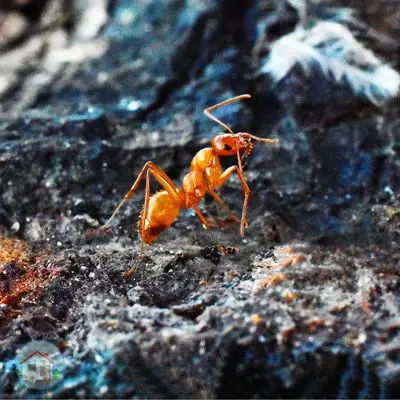
-The red imported fire ant is a common ant found in the Southeastern seaboard and parts of California.
-Fire ants have an exoskeleton and six legs, and their head is typically copper brown in color.
-Worker ants have mandibles, and they use their stinger to inject venom into their prey.
-The result of being stung by a fire ant is a burning sensation and red welts.
-They build a single mound nest in unshaded locations roughly 18 cm tall and 61 cm wide
Odorous House Ants
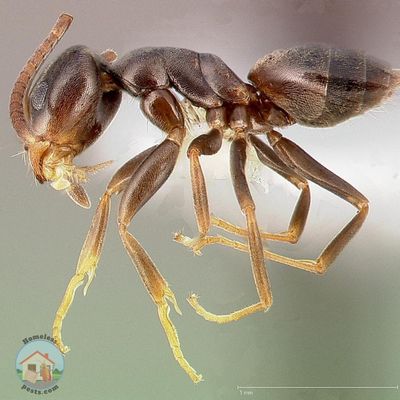
– OHA are small, dark brown to black ants that lack a sting or acidopore and have a slit-like opening on the ventral side of the gaster one segment from the tip.
– Odorous house ants can be found in many places, indoors and outdoors.
– They nest in pre-existing spaces, often near water or food sources.
– OHAs are polygynous, with many queens per colony.
Argentine Ants
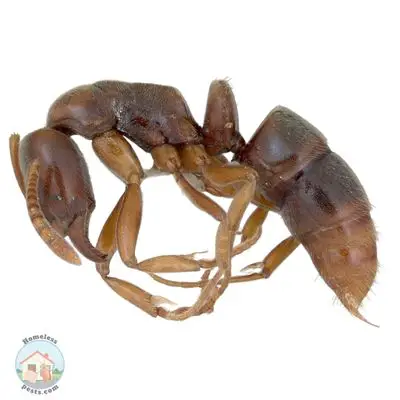
– Argentine ants are typically light to dark brown in color and range between 2.2 to 2.8 mm long.
– They are wingless with a 12-segmented antenna and emit a musty odor when crushed.
– Queens are slightly larger than workers, measuring between 4 to 6 mm long.
– Reproductives queens and males may have wings.
– The most common sign of an Argentine ant infestation is witnessing the trails of ants, often traveling up buildings, trees, and into homes.
Pharaoh Ants

– Pharaoh ants are a small (.2 mm), light yellow to red species of ant that lives in large colonies.
– Pharaoh ants nest in warm, humid areas near food sources like behind baseboards, in walls voids, underneath floors, or behind large appliances.
– Pharaoh ants feed on a wide variety of foods including other insects, sweets, oils, and proteins.
– Pharaoh ants can carry and transmit serious diseases to people including salmonella and Streptococcus.
– Pharaoh ants are difficult to control because they live in large colonies and can “bud” when the colony senses danger meaning the queen will escape.
Thief Ants
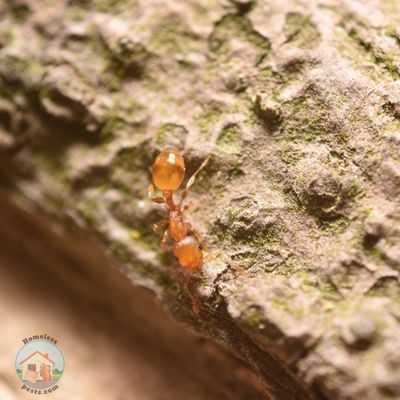
– tiny, yellowish ants that are often confused with Pharaoh ants, but have 2 segments in the club-like structure at the end of the antenna (Pharoah ants has 3 segments)
– lives among other ants and acts as a predator of their brood
– omnivorous and prefer grease or high protein foods over sweets
– often invade houses and may nest indoors in cracks and cupboards
Pavement Ants

– They often construct their nests under the foundation of buildings.
– Small dark brown to black ants (>3mm) that occur in all 50 states.
-There are striations on the head and dorsal surface of their thorax and their 12-segmented antennae end in a 3-segmented club.
-Food can be termites, other insects, sugar or protein based ingredients.
-Pavement ants use a chemical trail to recruit nestmates to a food source.
-Foraging ants are usually active on the floor and along the edge of the walls near door frames at night.
-The workers live for several years and the largest colonies can exceed 10,000 workers.
Carpenter Ants
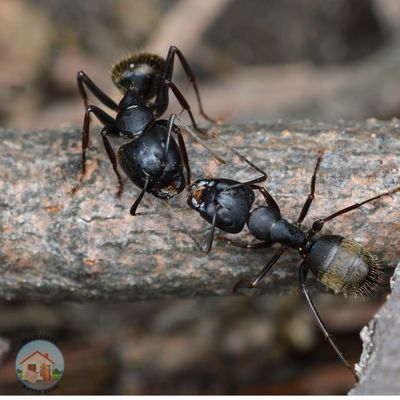
– 24 species of carpenter Ant are recorded in the USA
Carpenter Ants a waist with one node (petiole) and a thorax that is evenly rounded when viewed from the side.
– Workers are usually black or red and black in color.
– Workers usually range in size from 10 – 13 mm in length; one species is just 5mm long.
– Carpenter ant workers of the same species vary in size (major and minor workers).
– Queens and males are larger than workers and have wings. Queens will lose their wings once they start a new nest.
-Queens may be as large as one 2.5 cm.
